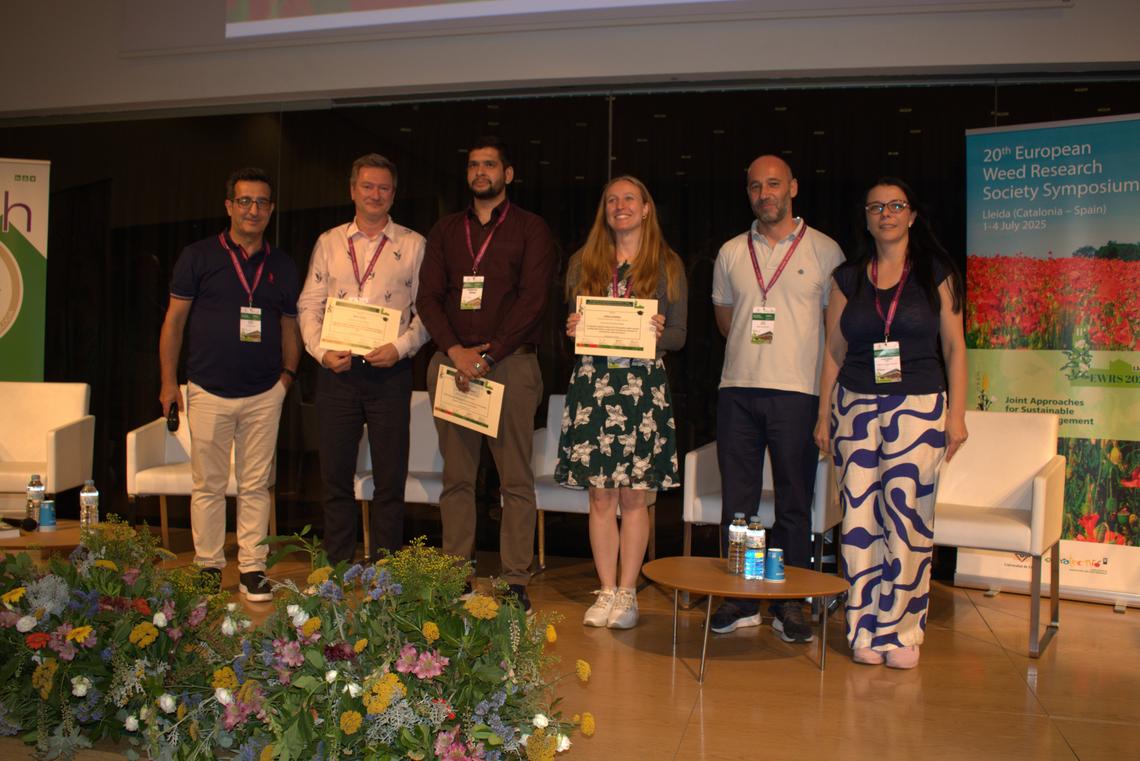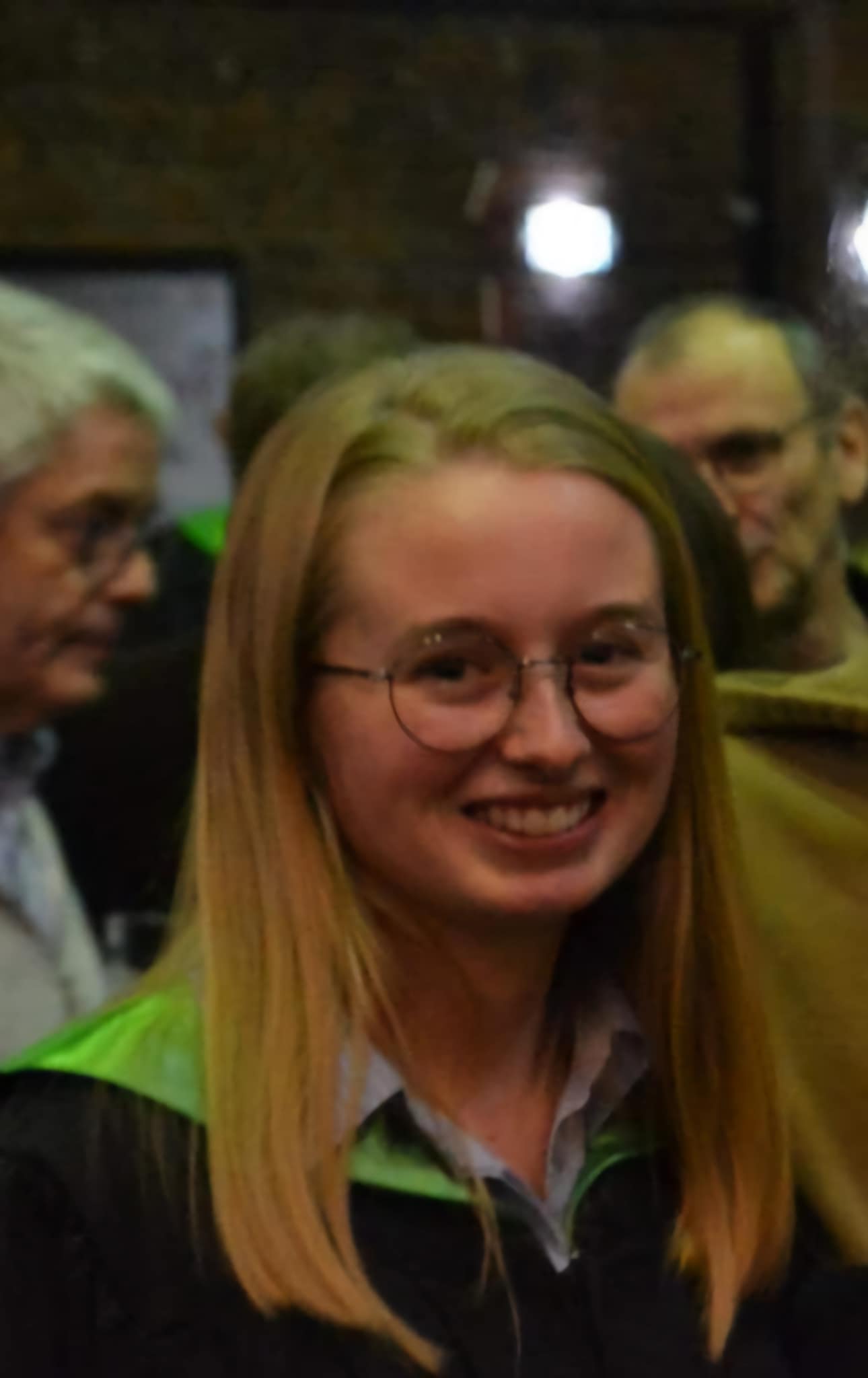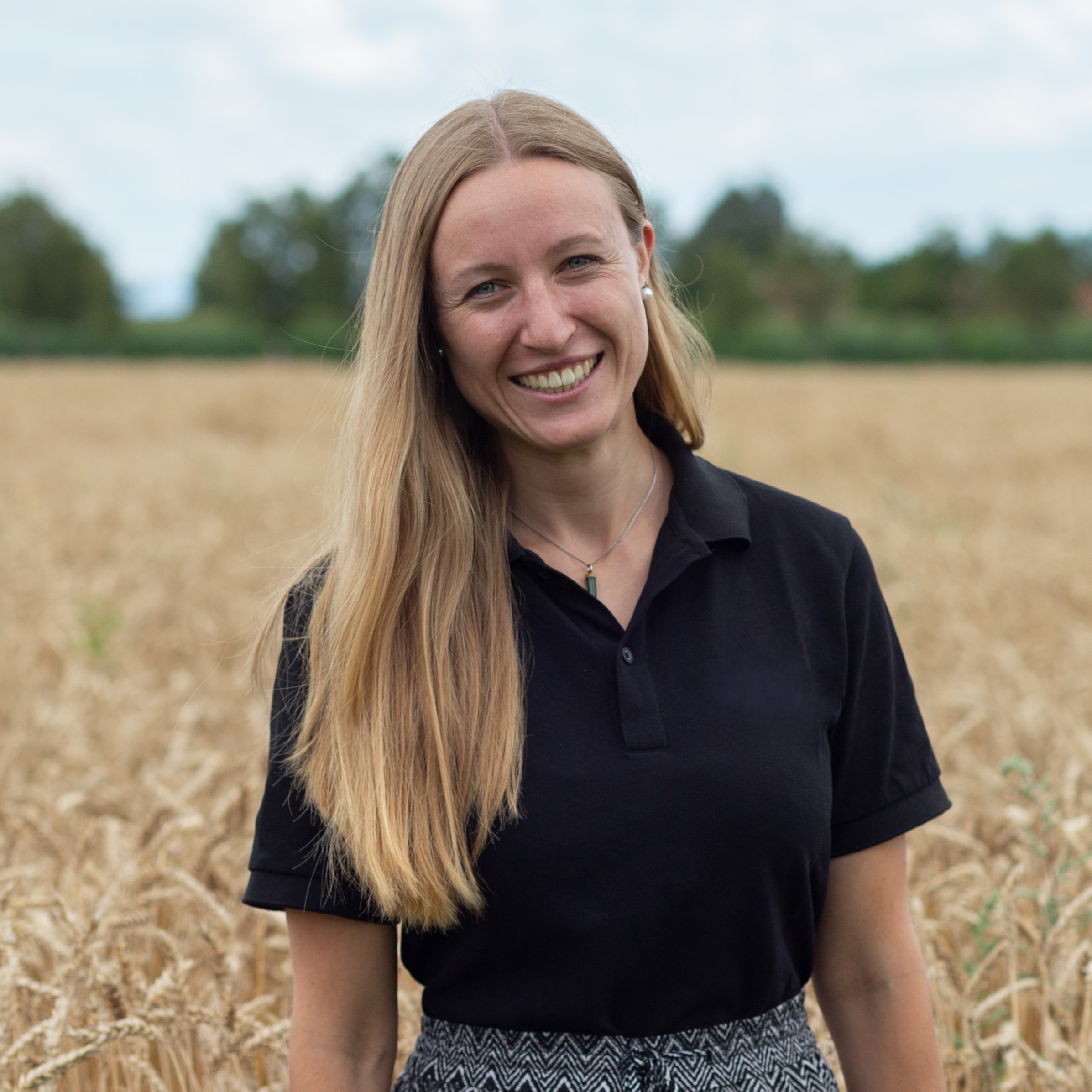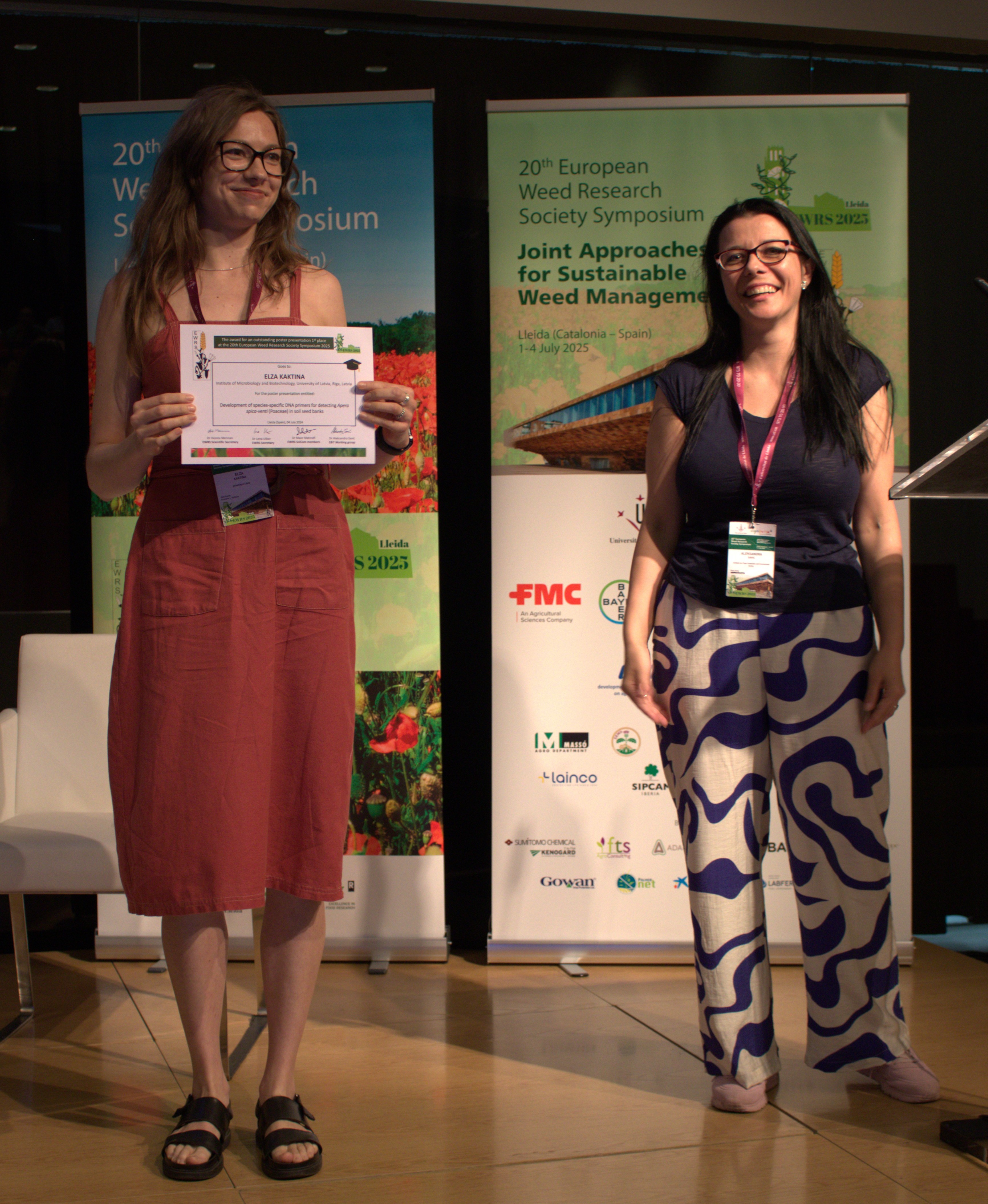EWRS Students award for best oral and poster presentation at the 20th EWRS Symposium in Lleida
Posted on July 17th, 2025 on 12:11:06 by Aleksandra Savić

As part of the 20th European Weed Research Society Symposium (#EWRS 2025), held from 1st to 4th July 2025 in Lleida, Spain, a student competition was organized for the best oral and poster presentations.
This event brought together young researchers from various European countries who had the opportunity to present their latest studies. Approximately 70 posters and 16 oral presentations participated in the competition. Evaluation teams composed of experts were formed to assess the quality and innovativeness of the presentations. Based on the assessment results, it was determined that three oral presentations received the same number of points, and all three were awarded first prize for oral presentation. In the poster category, first, second, and third prizes were awarded.
The prizes for the best presentations in both categories are as follows:
- First Prize: €800;
- Second Prize: €700;
- Third Prize: €600.
The awarded prize money can be used to cover travel expenses for participation in future EWRS events through July 2027, supporting continued professional development and dissemination of research within the weed science community.
Winners of the oral presentations
First Prize: Nina Leclef (University of Liege, Belgium)
“Long-term changes in Belgium winter wheat (Triticum aestivum L.) arable flora: A functional and taxonomic analysis from the 1940s to 2024”
The study analyses long-term changes in the composition and functional traits of plant communities in Belgian winter wheat fields from the 1940s to 2024. Comparative surveys conducted in the same or similar fields revealed a significant decline in species number and biodiversity, from 140 recorded species in the 1940s to 105 species in 2024. Some species that were once common but are now threatened, such as Centaurea cyanus and Scandix pecten-veneris, have completely disappeared from current communities. The research indicates that agricultural intensification is the main driver of taxonomic and functional biodiversity loss, highlighting the need for targeted conservation measures to protect plant communities within agroecosystems.
First Prize: Muhammad Adnan (La Trobe University, Melbourne, Australia)
“Seed biology and germination response of weedy Gazania species in Australia”
The study investigates seed biology and germination response of invasive Gazania species in Australia. Seeds from four populations collected across different locations and land-use types showed significant differences in seed mass and width but similar germination patterns. Germination was high (>78%) across a wide range of temperatures and was unaffected by light conditions or pH. Seeds did not germinate below -1.2 MPa water potential and exhibited tolerance to high salinity levels (up to 300 mM NaCl). These findings indicate that Gazania has very flexible germination requirements, contributing to its strong invasive potential in Australian agricultural systems.
First Prize: Sonja Kimmel (University of Hohenheim, Stuttgart, Germany)
“A comparative applied analysis of six site-specific robotic assisted weeding approaches in sugar beet including the evaluation of contemporary weed assessment”
The study compared six advanced site-specific robotic weeding approaches in sugar beet, including sensor-based mechanical and chemical systems, against broadcast herbicide treatment and an untreated control. Experiments showed that robots with real-time weed detection (ARA® and Farming GT®) achieved total weed control efficacy comparable to broadcast herbicide applications (up to 92%). Hoeing robots with selective intra-row blades reached 80% efficacy in intra-row areas, while other mechanical systems were about 25% less effective overall. All hoeing treatments caused some crop disturbance, mainly through plant burial. Manual weed counts were more reliable than UAV-derived estimates for evaluating performance. The results demonstrate that site-specific robotic weeding is a promising tool for integrated weed management in sugar beet production.
Winners of the poster presentations
First Prize: Elza Kaktina (Institute of Microbiology and Biotechnology, University of Latvia, Riga, Latvia)
“Development of species-specific DNA primers for detecting Apera spica-venti (Poaceae) in soil seed banks”
The study developed and tested two species-specific nuclear DNA primer pairs for detecting Apera spica-venti seeds in soil seed banks. Primers were designed using the Angiosperms353 probe set and validated for specificity against 20 other common arable weed species. In seed-spiked soil samples, detection of a single seed per 100 g of soil was possible, though amplification success varied between primer pairs. These primers enable sensitive molecular detection of A. spica-venti, supporting improved monitoring of this herbicide-resistant weed in agricultural soils.
Second Prize: Kainat Bibi (Natural Resources Institute, University of Greenwich, Chatham, United Kingdom)
“Assessing the current status of Vulpia myuros as an arable weed in the United Kingdom, France and Switzerland”
The study assessed the distribution and impact of Vulpia myuros in arable crops across the UK, France, and Switzerland through a farmer survey. Results showed the weed is especially prevalent in winter-sown crops like winter wheat, barley, and oilseed rape, with its spread favored by reduced or no-till practices. Many farmers reported increasing problems over the past three years and estimated yield losses ranging from 23% to 45%. The findings highlight V. myuros as an emerging threat to crop productivity in Europe, underscoring the need for sustainable management strategies.
Third Prize: Rebecca Constantia Örneberg (Swedish University of Agricultural Sciences, Uppsala, Sweden)
“Dynamics of trait diversity among arable plants”
The study analyses the diversity of plant traits in field margins of Swedish arable land using data from the first nationwide inventory of arable plants, which recorded over 300 non-crop species across 290 field margins. By combining survey data with information on management practices, soil properties, and trait databases, the research aims to identify how environmental and agronomic factors shape taxonomic and functional diversity. The findings will help clarify how field margin plant communities contribute both beneficial ecosystem services and potential disservices, informing strategies to balance biodiversity conservation with crop productivity.
676 x viewed | 11 Likes -
Message to the author
Filter by theme
Filter by Working Group
How can I submit a post?
We would like to welcome you as a contributing author for the EWRS blog. Please contact the Communication Officer, Camilla Moonen. She can give you writing access to the blog. After that, you can start writing articles for the blog, from the 'My Account page'. More information can be found on the "How to use the Blog page".






